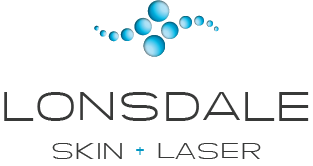Thread Lift Procedure
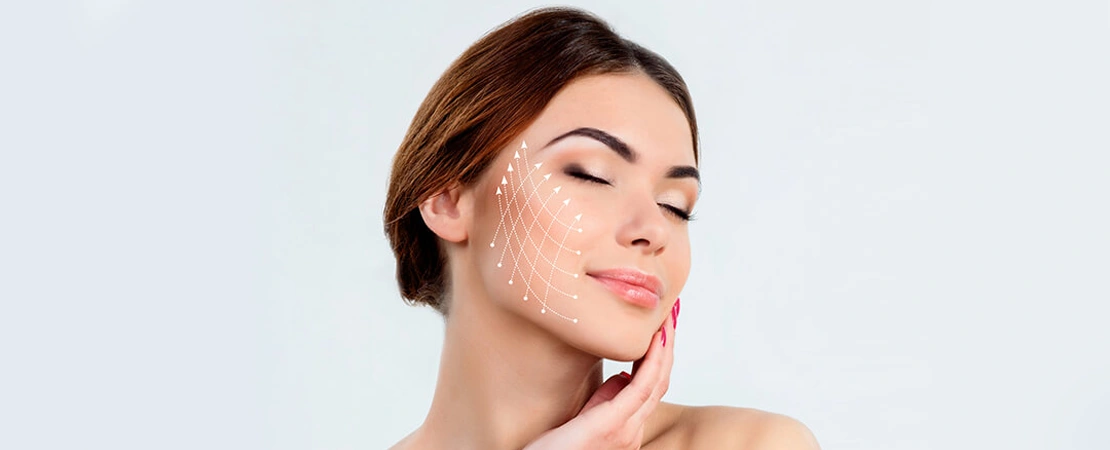
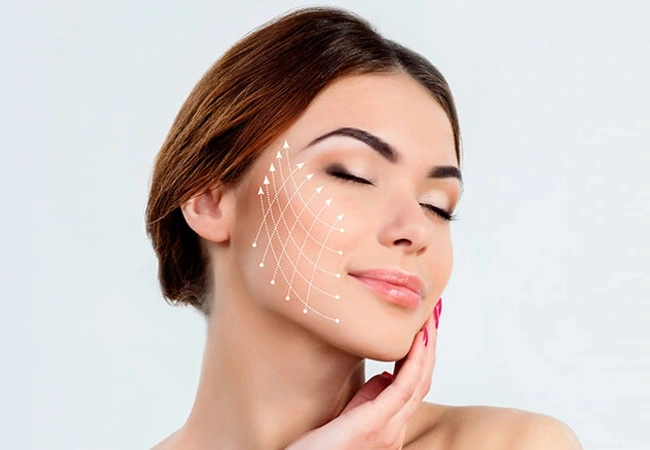
What is a thread lift?
Thread lift is a cosmetic procedure that offers a minimally invasive non-surgical facelift procedure aiming to eliminate wrinkles and lift the skin.
Thread lifts tighten your skin by inserting medical-grade thread material into your face and then “pulling” your skin up by tightening the thread.
Also called a barbed suture lift, it aims to lift and sculpt the shape of your face or breasts. Thread lifts use temporary, medical-grade suture material (Instalift) to “stitch-up” your skin so that it’s drawn taut.
The typical candidate for a thread lift is in their late 30s to early 50s. A person who is generally in good health and is just starting to notice the signs of aging may benefit the most from the subtle impact of a thread lift.
Those who can’t have a surgical facelift because of medical conditions that make general anesthesia risky may consider a thread lift as a safer alternative.
Your forehead, jowls, under-eye area, and eyebrow are all parts of your face that can be considered for a thread lift. You can choose to target just one area or several at once, increasing the cost.
Thread lifts don’t require general anesthesia, so you save money on the cost of sedation. You also don’t have to consider taking recovery time off from work. Recovery is minimal — it can even be done on your lunch break.
Dr. Gouws may recommend that you get additional therapies or cosmetic procedures such as Botox or Juvederm to boost the effects of your thread lift.
How does a thread lift work?
The thread lift procedure works in two ways.
The first is fairly straightforward. By threading thin, dissolvable sutures underneath your skin, your doctor is able to pull your skin tight around your forehead and neck.
Invisible, painless “barbs” grab on to your skin and make sure that the thread grips your underlying tissue and muscles as the thread is pulled tight.
Once a barbed thread is inserted, your body’s healing response is triggered. Even though you’re not injured by the threads under your skin, your body detects a suture material and stimulates collagen production in the affected area. Collagen can fill gaps in sagging skin and restore a more youthful elasticity to your face.
A 2017 of 100 people who’d undergone a thread lift suggested that the primary effect of a thread lift procedure is skin appearing tighter and more structured. After a year, this effect begins to decrease as the sutures dissolve. However, there was a secondary “rejuvenation” effect that stayed in place and was noticeable 3 years or more after the procedure.
How is it done
The procedure for thread lift may be slightly different depending on the area you’re targeting. The basic technique is usually the same.
- You’ll be asked to recline in the room where your procedure is being performed. Alcohol, as well as topical anesthetic, will be applied to your skin as it’s prepped for surgery.
- A thin needle or cannula will be used to insert the threads underneath your skin. Inserting the threads can take 30 to 45 minutes.
- After the threads are inserted, the method of insertion will be removed. You may feel light pressure or tightening under your skin.
- Within a few minutes of the needles being taken out, your procedure will be complete and you’ll be free to go home or back to work.
Targeted areas for a thread lift
Many people choose a thread lift for facial areas that “sag” or look less tight over time. These areas include:
- Jowls and jawline
- Brow line
- Under-eye area
- Forehead
- Cheeks
What are the expected benefits?
- Lifted sagging skin
- Eliminating nasolabials
- Lifting jawlines
- Eliminating marionettes
- Substantial wrinkle reduction
- Lifted sagging skin
- Slowing down skin aging
- Rejuvenated skin
Are there any risks or side effects?
A thread lift is considered a low-risk procedure with minimal recovery time, but there are side effects and a risk of complications.
After a thread lift, it’s not uncommon to experience the following:
- Bruising
- Swelling
- Bleeding
- Slight pain at the site of the thread injection
Possible complications are minor and easily corrected.
What to expect after a thread lift
Recovery after a successful thread lift is quite minimal. While there may be some visible swelling and bruising, you can go back to work right away if you’d like.
Results should be apparent right after the threads are put into place, but you may notice more in the days and weeks right after they are inserted, as swelling and bruising starts to subside.
Results from a thread lift aren’t meant to be permanent. Successful effects typically last from 1 to 3 years. Like other dissolvable dermal fillers the threads used in the procedure will eventually be absorbed by the tissue underneath your skin.
After a thread lift, you can resume your normal routine. Your provider may advise you not to rub your face vigorously and to avoid sleeping on your side in the initial weeks following the procedure.
The American Society of Plastic Surgeons advises that you skip your daily moisturizer for the first few weeks after a thread lift, and sleep with your head propped up to avoid rolling over onto the newly placed sutures.
You’ll also be advised to avoid saunas and high intensity workouts for the first week or so after the thread lift is performed.
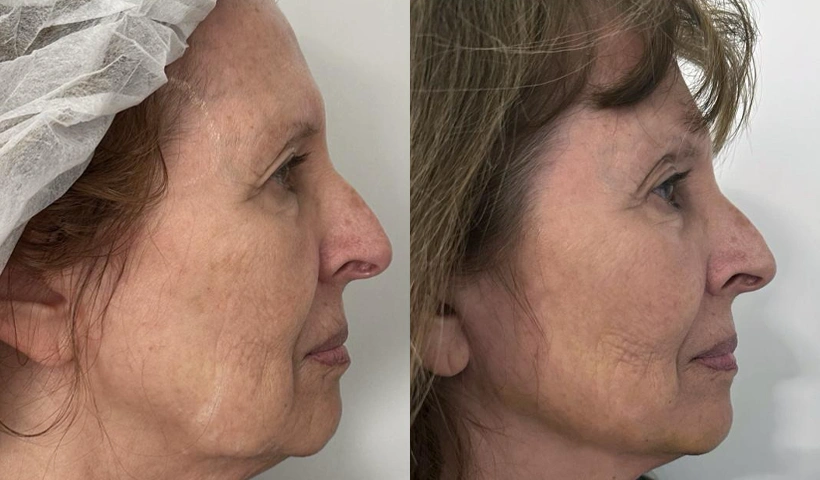
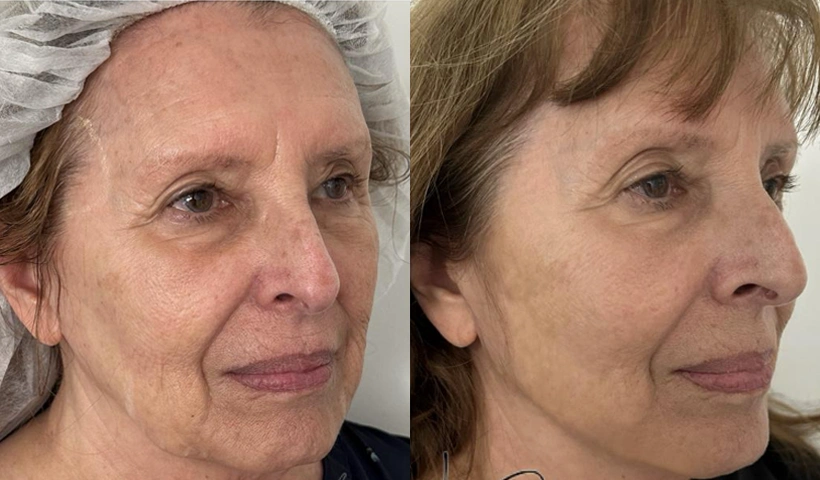
Preparing for a thread lift
After consulting with doctor and booking your appointment, you will be given some guidelines for do’s and don’ts to prepare for your thread lift.
Do
- Inform your doctor of any medications you’re using prior to your procedure
- Try to relax and avoid stressors the night before your appointment
- Steer clear of any known inflammation triggers in your diet
Don’t
- Drink alcohol the night before a thread lift
- Take blood thinning medication or Non Steroidal Anti Inflammatory Drugs ( NSAIDs) such as ibuprofen, 1 week before your thread lift
Thread lift vs. facelift
- A thread lift won’t give you the same dramatic results as a surgical facelift. If you’re considering investing in this procedure, it’s important to have realistic expectations.
- A thread lift is also not permanent. A facelift can’t stop the process of aging completely, but the results last many years. The subtle results of a thread lift usually last around 2 years.
- To make the results last longer, you may need dermal fillers or other therapies that cost additional time and money.
- On the other hand, the risks of complications with facelift surgery are much higher. If you don’t like the results of a facelift, there’s not much you can do except have another invasive procedure. If you don’t like the result of a thread lift, you can simply wait for the threads to dissolve.
- A thread lift is less expensive than a facelift. You can go right back to work after having it done, and the recovery is minimal.
- If you’re noticing signs of aging in your jawline or under your eyes, a thread lift is a low-risk way to see how a more permanent procedure might look.


